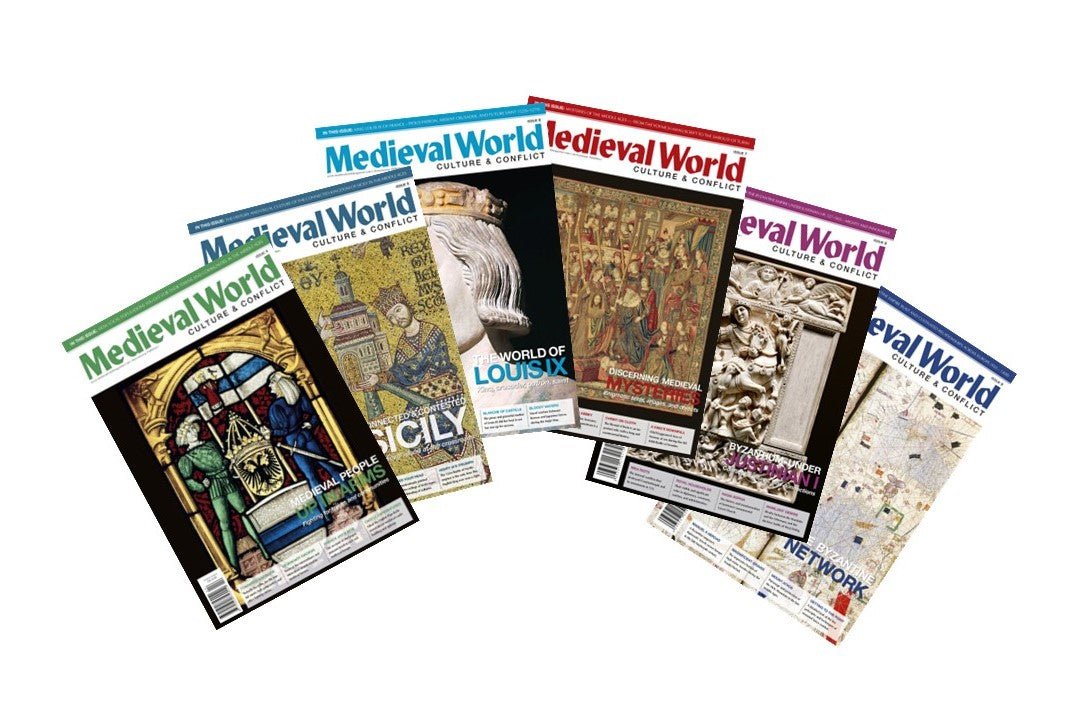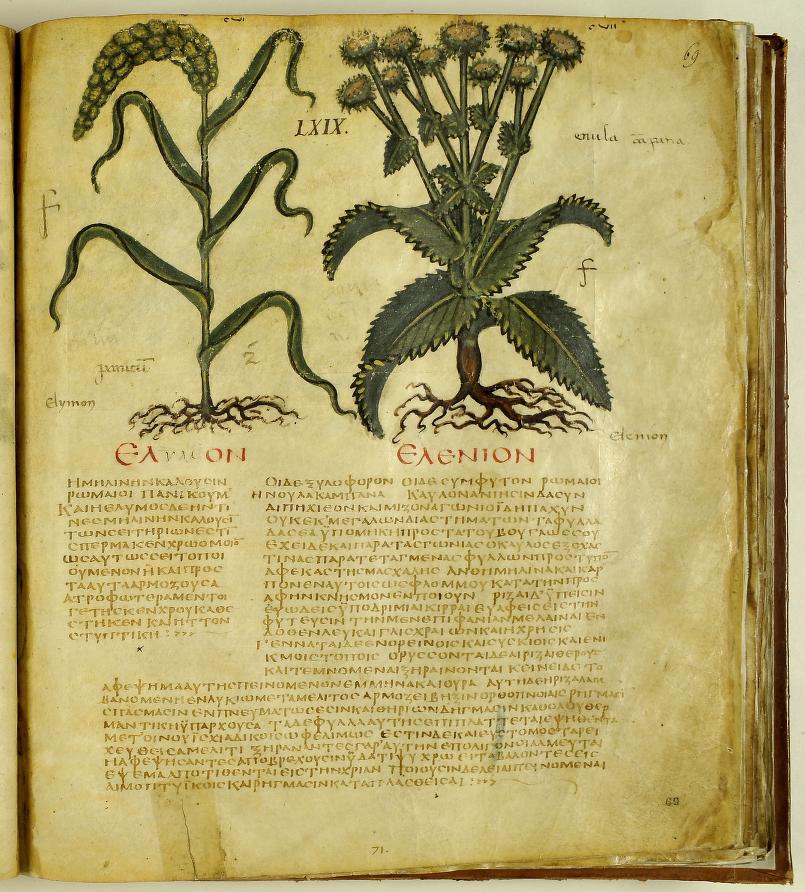Medieval Games, Part III: combat in turn-based strategy games
In my previous blog, I introduced you to the game Civilization, adding some basic info on the available units as well. In this third part of the series on medieval-themed games, I will focus on combat mechanics in the game, and the way the developers tried to assign certain historical warrior-type characteristics to their units.
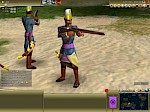 Combat has certainly improved in later installments of Civilization, though it can hardly be called realistic. Due to the turn-based character of the game, the Civilization-series mostly focuses on combat on a strategic level. Units can operate individually, but they are stronger combined into stacks (or carpets; see below), and each unit can only attack one unit in an enemy stack at a time (with the exception of bombarding and flanking). In the first three installments, units had a strength and a defense value; loosing meant complete destruction of the unit, with the winner losing some ‘health’ based on their strength and a random roll which had to cover the aspects of chance, the clever moves of capable generals, and any other eventuality during battle (which also meant that tanks could actually lose against men with spears). Since a proper city could easily spew forth a unit every few turns, it didn’t really matter if you lost 30 units in one turn. In Civ IV and V, the developers tried a different approach. Units are able to turn away from battle when loosing (in the fourth installment, this is only at times available for cavalry and mechanized units; in the fifth, this applies to all).
Combat has certainly improved in later installments of Civilization, though it can hardly be called realistic. Due to the turn-based character of the game, the Civilization-series mostly focuses on combat on a strategic level. Units can operate individually, but they are stronger combined into stacks (or carpets; see below), and each unit can only attack one unit in an enemy stack at a time (with the exception of bombarding and flanking). In the first three installments, units had a strength and a defense value; loosing meant complete destruction of the unit, with the winner losing some ‘health’ based on their strength and a random roll which had to cover the aspects of chance, the clever moves of capable generals, and any other eventuality during battle (which also meant that tanks could actually lose against men with spears). Since a proper city could easily spew forth a unit every few turns, it didn’t really matter if you lost 30 units in one turn. In Civ IV and V, the developers tried a different approach. Units are able to turn away from battle when loosing (in the fourth installment, this is only at times available for cavalry and mechanized units; in the fifth, this applies to all).
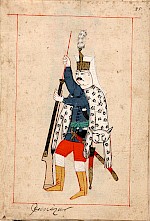 In addition, they now have one basic strength value, though they added an additional ranged attack value to ranged units in Civ V. Most importantly, each unit has certain added bonuses and disadvantages based on certain characteristics of such units in history. Using Civ IV as an example: based on the principle that the archer and longbowman are most effective when firing from protected positions, i.e. walls and/or higher ground, these units receive a bonus when defending cities, forts and hilltops. Also corresponding to historical reality (in general, at least), the knight in the game is a fast and powerful attack unit, it can flank to attack artillery units, and mostly dominates the battlefield during the medieval period. On the other hand, it does not receive any defensive bonuses, not even in cities, fortresses or on hills/in forests (in contrast to most infantry units). The counter for the knight is the pikeman, which receives huge bonuses if fighting against cavalry, but which would lose against most other units. The trebuchet is ideal vs static defenses, but weaker against units in the field; the Viking berserker can attack from ships without any penalties (which plague other units, unless they have the ‘amphibious’ promotion); the keshik, being a fast-moving light type of cavalry, can move equally fast on all terrains; the jannisary is a stronger version of the musketman/musketeer (more info about this unit will be provided in the upcoming Special of Medieval Warfare, which focuses on the fall of Constantinople in 1453); the Spanish conquistador and Byzantine cataphracts (see Raffaele D’Amato’s article in Medieval Warfare II-6) are a more powerful type of ‘knight’, with the conquistador receiving extra bonuses against melee units (based on their effectiveness against the infantry warriors of the Aztecs).
In addition, they now have one basic strength value, though they added an additional ranged attack value to ranged units in Civ V. Most importantly, each unit has certain added bonuses and disadvantages based on certain characteristics of such units in history. Using Civ IV as an example: based on the principle that the archer and longbowman are most effective when firing from protected positions, i.e. walls and/or higher ground, these units receive a bonus when defending cities, forts and hilltops. Also corresponding to historical reality (in general, at least), the knight in the game is a fast and powerful attack unit, it can flank to attack artillery units, and mostly dominates the battlefield during the medieval period. On the other hand, it does not receive any defensive bonuses, not even in cities, fortresses or on hills/in forests (in contrast to most infantry units). The counter for the knight is the pikeman, which receives huge bonuses if fighting against cavalry, but which would lose against most other units. The trebuchet is ideal vs static defenses, but weaker against units in the field; the Viking berserker can attack from ships without any penalties (which plague other units, unless they have the ‘amphibious’ promotion); the keshik, being a fast-moving light type of cavalry, can move equally fast on all terrains; the jannisary is a stronger version of the musketman/musketeer (more info about this unit will be provided in the upcoming Special of Medieval Warfare, which focuses on the fall of Constantinople in 1453); the Spanish conquistador and Byzantine cataphracts (see Raffaele D’Amato’s article in Medieval Warfare II-6) are a more powerful type of ‘knight’, with the conquistador receiving extra bonuses against melee units (based on their effectiveness against the infantry warriors of the Aztecs).
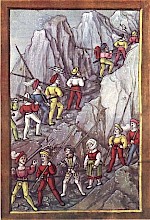 The crossbowman and maceman are perhaps less obvious, but also valid. The maceman, being a medium/heavily armoured man-of-arms-like infantry warrior, was historically a melee fighter effective against less-heavily armoured infantry units. Thus, he receives bonuses against melee units in the game, like the pikeman or the swordsman (which in the game is a unit belonging to ancient/classical times, linking them to Roman legionaries as well as Gallic and ‘German’ barbarian warriors wielding iron swords). The crossbowman’s heavy bolts were able to pierce armour, and so it is meant as a counter against the supposedly heavily armoured maceman in the game. It seems that they accounted for the slow rate of fire of the crossbowmen in relation to the fast attack rate of knights by making the bonus of that unit only applicable against infantry/melee units, not against (historically often even more heavily armoured) knights. The pikeman, which in the two latest installments looks suspiciously like the Swiss pikeman, is inferior to most other infantry units in the game, which may seem rather strange if we take into account all those successes of the Swiss armies against both cavalry and infantry in the Late Middle Ages (see Medieval Warfare II-3 for the ‘rebirth’ of an effective pike-wielding infantry during 14th-15th centuries). That said, it is probable that the likeliness to the Swiss pikeman was mostly based on certain aesthetic motives, and that the game’s pikemen should be compared with the less-effective spear-wielding units of the Dark and High Middle Ages. In fact, one of the main bonuses of the Holy Roman Empire’s Landsknecht unit, which was modeled on the Swiss pikemen under Emperor Maximilian (for more information on the Landsknechts, see Sidney Dean’s article in Medieval Warfare I-2), is indeed an extra effectiveness against both melee and cavalry units (though in the game, it would still likely loose against the maceman). Again, these characteristics are all rather basic, but I don’t think that we can expect much more of such a turn-based strategy game.
The crossbowman and maceman are perhaps less obvious, but also valid. The maceman, being a medium/heavily armoured man-of-arms-like infantry warrior, was historically a melee fighter effective against less-heavily armoured infantry units. Thus, he receives bonuses against melee units in the game, like the pikeman or the swordsman (which in the game is a unit belonging to ancient/classical times, linking them to Roman legionaries as well as Gallic and ‘German’ barbarian warriors wielding iron swords). The crossbowman’s heavy bolts were able to pierce armour, and so it is meant as a counter against the supposedly heavily armoured maceman in the game. It seems that they accounted for the slow rate of fire of the crossbowmen in relation to the fast attack rate of knights by making the bonus of that unit only applicable against infantry/melee units, not against (historically often even more heavily armoured) knights. The pikeman, which in the two latest installments looks suspiciously like the Swiss pikeman, is inferior to most other infantry units in the game, which may seem rather strange if we take into account all those successes of the Swiss armies against both cavalry and infantry in the Late Middle Ages (see Medieval Warfare II-3 for the ‘rebirth’ of an effective pike-wielding infantry during 14th-15th centuries). That said, it is probable that the likeliness to the Swiss pikeman was mostly based on certain aesthetic motives, and that the game’s pikemen should be compared with the less-effective spear-wielding units of the Dark and High Middle Ages. In fact, one of the main bonuses of the Holy Roman Empire’s Landsknecht unit, which was modeled on the Swiss pikemen under Emperor Maximilian (for more information on the Landsknechts, see Sidney Dean’s article in Medieval Warfare I-2), is indeed an extra effectiveness against both melee and cavalry units (though in the game, it would still likely loose against the maceman). Again, these characteristics are all rather basic, but I don’t think that we can expect much more of such a turn-based strategy game.
 In addition to the above mentioned system, units receive experience points for every battle they survive, which can be spent on promotions to further improve a unit according to a players’ own wishes. For example, veteran units can improve their effectiveness against archery troops specifically, or overall when defending or attacking a city. Aspects like superior morale and tactics during battle, so crucial for battles overall, are somewhat covered by assigning a higher combat value or a certain added bonus to units which were historically famous for being effective in one or both. Thus, the ferociousness of Viking berserkers is ‘translated’ into a higher combat rating; the same goes for the jannissaries’ discipline and fighting prowess.
In addition to the above mentioned system, units receive experience points for every battle they survive, which can be spent on promotions to further improve a unit according to a players’ own wishes. For example, veteran units can improve their effectiveness against archery troops specifically, or overall when defending or attacking a city. Aspects like superior morale and tactics during battle, so crucial for battles overall, are somewhat covered by assigning a higher combat value or a certain added bonus to units which were historically famous for being effective in one or both. Thus, the ferociousness of Viking berserkers is ‘translated’ into a higher combat rating; the same goes for the jannissaries’ discipline and fighting prowess.
 One more detail which I’d like to focus on in this regard is fact that the developers may have overestimated (or have excessively focused on) the western form of medieval warfare in relation to the (Middle-) Eastern one(s). I can understand that division between knight, spearman, longbowman, and maceman might be translated to a (Middle-) Eastern model. The spear was widely used by infantry in many regions; heavy cavalry was present overall, even if quantity and quality may have differed; and, even if other infantry units in the east did not carry maces as a standard weapon, nor did the infantry units in the west (and the same can be said of the swords). However, even if, in the East, the bow was never used like the English Longbowmen did at Agincourt, it was a very important type of weapon nonetheless, especially for cavalry. This has been translated by giving Arabs their own unique camel archer unit, and the Mongols the keshik, but, while the camel archer is somewhat similar in strength, the keshik is certainly not, not even in the fifth installment – though I must admit, at least they assigned the horsemen to the medieval period (instead of to the classical period, like in Civ IV) and added a considerable ranged attack value. Of course, in a head-on collision, Mongol horse archers were ‘inferior’ to heavily armoured western knights, I cannot deny that. However, the strength of units doesn’t seem to have been based on their strength during melee fights, but on the impact units had during their time. The muskets from the English redcoats weren’t necessarily better than those of the French; they were simply more disciplined (and perhaps better led?). Still, they are more powerful in the fourth game than the regular rifleman (which, incidentally, looks a lot like blue-clad French infantry of the 18th-19th centuries). The same can be said of the jannisaries in the fifth installment. If we were to take history as an example, it seems to me that there would not be many units equal to the keshik during the medieval period. It almost looks as if the makers combined several types of (steppe) horse warriors from the east, like the Parthians, the Magyars (See Medieval Warfare II-4), the Seljuq Turks (see Medieval Warfare III-3) and the Mongols, and combined it into one type of horse archer unit which was active throughout the Middle Ages (the Mongol keshik replaces the regular horse archer unit, based on Parthian/Hunnish example, which is available to all civilizations from the ancient/classical period onwards). I understand that the developers had no choice but to generalize, but (and I may very well be mistaken here, but still) I do think that they could have done a better job regarding this famous and much-feared Mongol warrior. Then again, we should bear in mind that there are more things involved in the game than only the military strength of a unit. In the game, each civilization has its own benefits; it may be that one of the Mongols bonuses involves quick growth of cities and the cheap and quick production of units. Among the many reasons why the Mongols could run rampant in Eastern Europe and the Middle-East was their huge army, and indeed, horse archers are most effective if used in large quantities. Perhaps that was their way to make the Mongols the powerful enemy they were. And again, we should not forget that Civilization is about ‘standing the test of time’. If the Mongols (or any other civilization at their height of power) would have been as near-impossible to defeat in the game during the medieval period as they were at the start of the 13th century, it would be tempting to turn that civilization off when you start a game. (For more information on the Mongol onslaught, see Peter Konieczny’s article on the Mongol invasion of Hungary in Medieval Warfare I-1)
One more detail which I’d like to focus on in this regard is fact that the developers may have overestimated (or have excessively focused on) the western form of medieval warfare in relation to the (Middle-) Eastern one(s). I can understand that division between knight, spearman, longbowman, and maceman might be translated to a (Middle-) Eastern model. The spear was widely used by infantry in many regions; heavy cavalry was present overall, even if quantity and quality may have differed; and, even if other infantry units in the east did not carry maces as a standard weapon, nor did the infantry units in the west (and the same can be said of the swords). However, even if, in the East, the bow was never used like the English Longbowmen did at Agincourt, it was a very important type of weapon nonetheless, especially for cavalry. This has been translated by giving Arabs their own unique camel archer unit, and the Mongols the keshik, but, while the camel archer is somewhat similar in strength, the keshik is certainly not, not even in the fifth installment – though I must admit, at least they assigned the horsemen to the medieval period (instead of to the classical period, like in Civ IV) and added a considerable ranged attack value. Of course, in a head-on collision, Mongol horse archers were ‘inferior’ to heavily armoured western knights, I cannot deny that. However, the strength of units doesn’t seem to have been based on their strength during melee fights, but on the impact units had during their time. The muskets from the English redcoats weren’t necessarily better than those of the French; they were simply more disciplined (and perhaps better led?). Still, they are more powerful in the fourth game than the regular rifleman (which, incidentally, looks a lot like blue-clad French infantry of the 18th-19th centuries). The same can be said of the jannisaries in the fifth installment. If we were to take history as an example, it seems to me that there would not be many units equal to the keshik during the medieval period. It almost looks as if the makers combined several types of (steppe) horse warriors from the east, like the Parthians, the Magyars (See Medieval Warfare II-4), the Seljuq Turks (see Medieval Warfare III-3) and the Mongols, and combined it into one type of horse archer unit which was active throughout the Middle Ages (the Mongol keshik replaces the regular horse archer unit, based on Parthian/Hunnish example, which is available to all civilizations from the ancient/classical period onwards). I understand that the developers had no choice but to generalize, but (and I may very well be mistaken here, but still) I do think that they could have done a better job regarding this famous and much-feared Mongol warrior. Then again, we should bear in mind that there are more things involved in the game than only the military strength of a unit. In the game, each civilization has its own benefits; it may be that one of the Mongols bonuses involves quick growth of cities and the cheap and quick production of units. Among the many reasons why the Mongols could run rampant in Eastern Europe and the Middle-East was their huge army, and indeed, horse archers are most effective if used in large quantities. Perhaps that was their way to make the Mongols the powerful enemy they were. And again, we should not forget that Civilization is about ‘standing the test of time’. If the Mongols (or any other civilization at their height of power) would have been as near-impossible to defeat in the game during the medieval period as they were at the start of the 13th century, it would be tempting to turn that civilization off when you start a game. (For more information on the Mongol onslaught, see Peter Konieczny’s article on the Mongol invasion of Hungary in Medieval Warfare I-1)
 In Civ V, they improved the combat system even further and removed the option of a ‘stack of doom’ in favour of the one-unit-per-tile option. In Civ I-IV, a player could stack an unlimited number of units in one tile. At first, this may not seem so strange; it was a big world, and one would need a huge number of units to realistically fill the space taken up by one tile. However, this also enabled players to create huge stacks of doom, containing so many units that the only thing able to withstand it was an almost equally large stack. There is some merit in this; despite certain advantages in tactics and clever use of weapon systems, there will be a point when an army simply is too big to be defended against. In the end, Leonidas’ little group of 300 was destroyed, no matter how long they managed to hold against all odds. Then again, even in real life, the number of units gathered together in a certain area (no matter how large) is quite limited due to logistical issues. More importantly for the game, such a stack did nothing to encourage tactical or even strategic gameplay; all you had to do was make sure that yours was big enough, and you would win.
In Civ V, they improved the combat system even further and removed the option of a ‘stack of doom’ in favour of the one-unit-per-tile option. In Civ I-IV, a player could stack an unlimited number of units in one tile. At first, this may not seem so strange; it was a big world, and one would need a huge number of units to realistically fill the space taken up by one tile. However, this also enabled players to create huge stacks of doom, containing so many units that the only thing able to withstand it was an almost equally large stack. There is some merit in this; despite certain advantages in tactics and clever use of weapon systems, there will be a point when an army simply is too big to be defended against. In the end, Leonidas’ little group of 300 was destroyed, no matter how long they managed to hold against all odds. Then again, even in real life, the number of units gathered together in a certain area (no matter how large) is quite limited due to logistical issues. More importantly for the game, such a stack did nothing to encourage tactical or even strategic gameplay; all you had to do was make sure that yours was big enough, and you would win.
 In the latest installment, they have tried to remedy this situation by allowing only one unit per tile, as well as by enabling ranged attacks during battle, providing the possibility of city envelopment and by making the units themselves more valuable. The benefits gained by surviving battles and acquiring promotions are considerable, and, in addition, they are more expensive and time-consuming to make. This is certainly more realistic than the huge armies and stacks from the older games, and does indeed add more opportunity to use the rudimentary tactic of cleverly positioning troops at the start of an engagement to manipulate the outcome of a battle. That said, since units between two adjoining tiles can be swapped, the stack of doom is, more or less, replaced with a ‘carpet of doom’, which sort of causes the same problem as the stack. Still, along with the fact that the relative positioning of units now has an actual impact on the outcome of battles, this makes for an (at least somewhat) more realistic strategic and (rudimentary) tactical game, which, I’m sure, greatly pleases the gamer who has stuck with the series for so long – and likely any newcomer as well. It is a smart move for the series itself as well, with so many other strategy games competing for popularity. Civilization may not be the most popular game-series in that field, but it is still a solid player. It enables a gamer to, indeed, ‘stand the test of time’, not just the test of the medieval or early modern period.
In the latest installment, they have tried to remedy this situation by allowing only one unit per tile, as well as by enabling ranged attacks during battle, providing the possibility of city envelopment and by making the units themselves more valuable. The benefits gained by surviving battles and acquiring promotions are considerable, and, in addition, they are more expensive and time-consuming to make. This is certainly more realistic than the huge armies and stacks from the older games, and does indeed add more opportunity to use the rudimentary tactic of cleverly positioning troops at the start of an engagement to manipulate the outcome of a battle. That said, since units between two adjoining tiles can be swapped, the stack of doom is, more or less, replaced with a ‘carpet of doom’, which sort of causes the same problem as the stack. Still, along with the fact that the relative positioning of units now has an actual impact on the outcome of battles, this makes for an (at least somewhat) more realistic strategic and (rudimentary) tactical game, which, I’m sure, greatly pleases the gamer who has stuck with the series for so long – and likely any newcomer as well. It is a smart move for the series itself as well, with so many other strategy games competing for popularity. Civilization may not be the most popular game-series in that field, but it is still a solid player. It enables a gamer to, indeed, ‘stand the test of time’, not just the test of the medieval or early modern period.
That said, if you want to get tactical, Civilization is not the title to go for. Luckily, there are other games available which are much more focused on actual tactics. In my next game-blogs, I will focus on units, gameplay and tactics (and glitches) in real-time strategy games, most importantly the popular title Medieval II: Total War.
Illustration credits:
The high-resolution illustration of the Mongol warriors by Darren Tan was first published in Medieval Warfare I-1.



